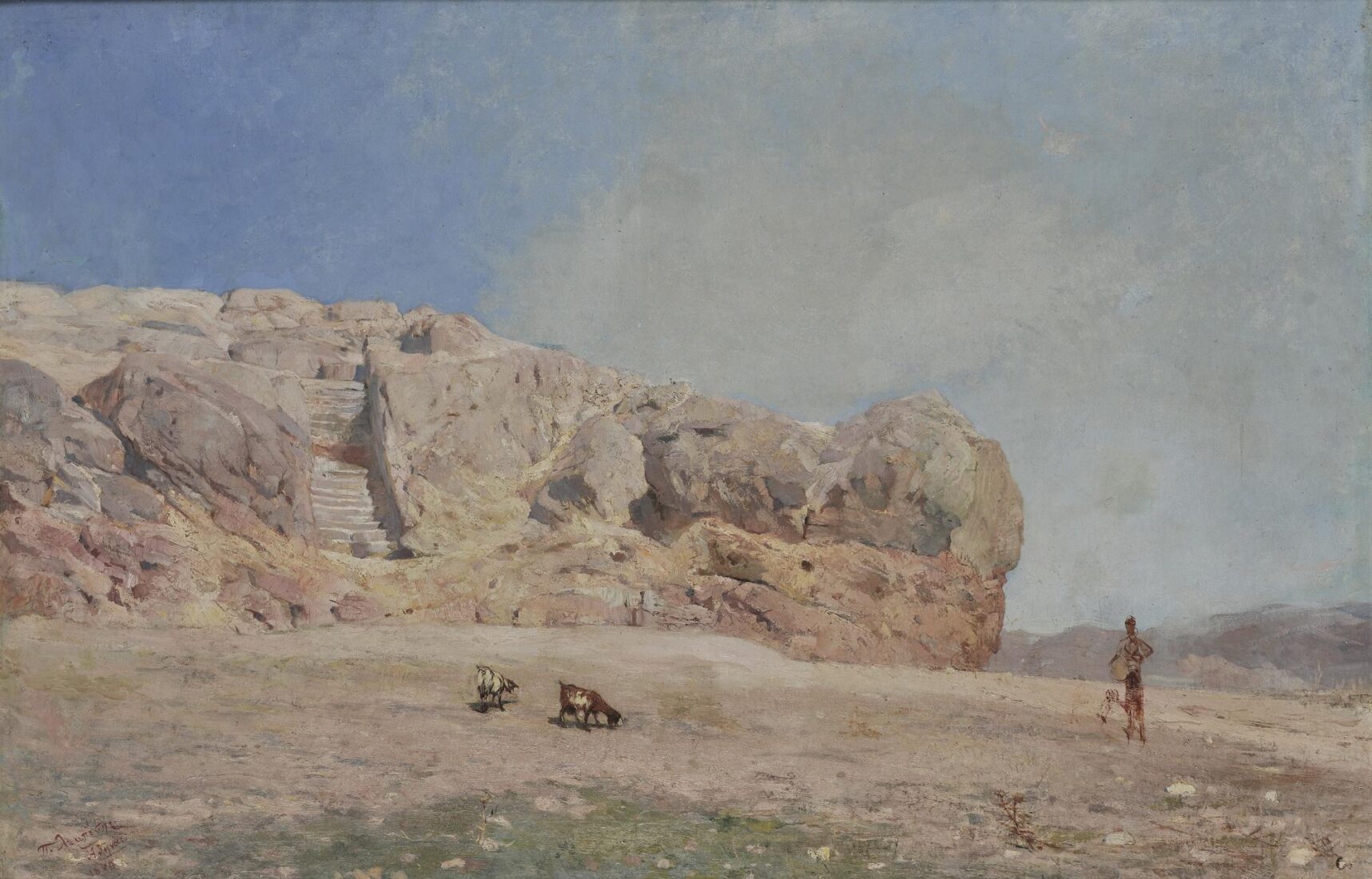We use cookies to make our site work properly, to personalize content and ads, to provide social media features and to analyze our traffic. We also share information about how you use our site with our social media, advertising and analytics partners. Read the Cookies Policy.

Lembesis Polychronis (1848 - 1913)
Areios Pagos, 1880
Oil on canvas, 62,5 x 95 cm
Zoe A. Soutzou Bequest
This painting and the “Areios Pagos” by Periklis Pantazis were produced during the same year, 1880, and their makers were friends, they may well have been made at the same time, as was the habit of Impressionist painters. It is interesting to compare the two paintings in order to find out how two painters coming from two different schools – Lembesis from Munich and Pantazis from Brussels – approached the historical rock of the Areios Pagos on a summer day. Let us first see the elements they have in common: the two paintings share the same dominant colour tonality, based on the interplay of gold-yellow ochre on the rock and grey-blue in the sky. In both paintings, shades are purple. Therefore, both painters are familiar with the Impressionist “recipe.” So, where is the difference to be found? In “writing,” in brushwork, and in rendering volume. Lembesis’ writing is meticulous; he draws and captures every detail in the subject. The rock, on the other hand, maintains all of its compactness, it is solid. On the other hand, let us see how Pantazis, who is more of a true impressionist, approached his subjects. His technique is utterly different. Here, free brushwork can be seen at work, “building” the form. The rock is not trapped within a closed outline; rather, it is an open form. Also note the sky and the clouds, rendered in the most agile brushwork. In the dry Attic light, of course, forms maintain their shape, they are easy to draw clearly. One is therefore at a loss as to which painting is the most faithful interpretation of reality.

